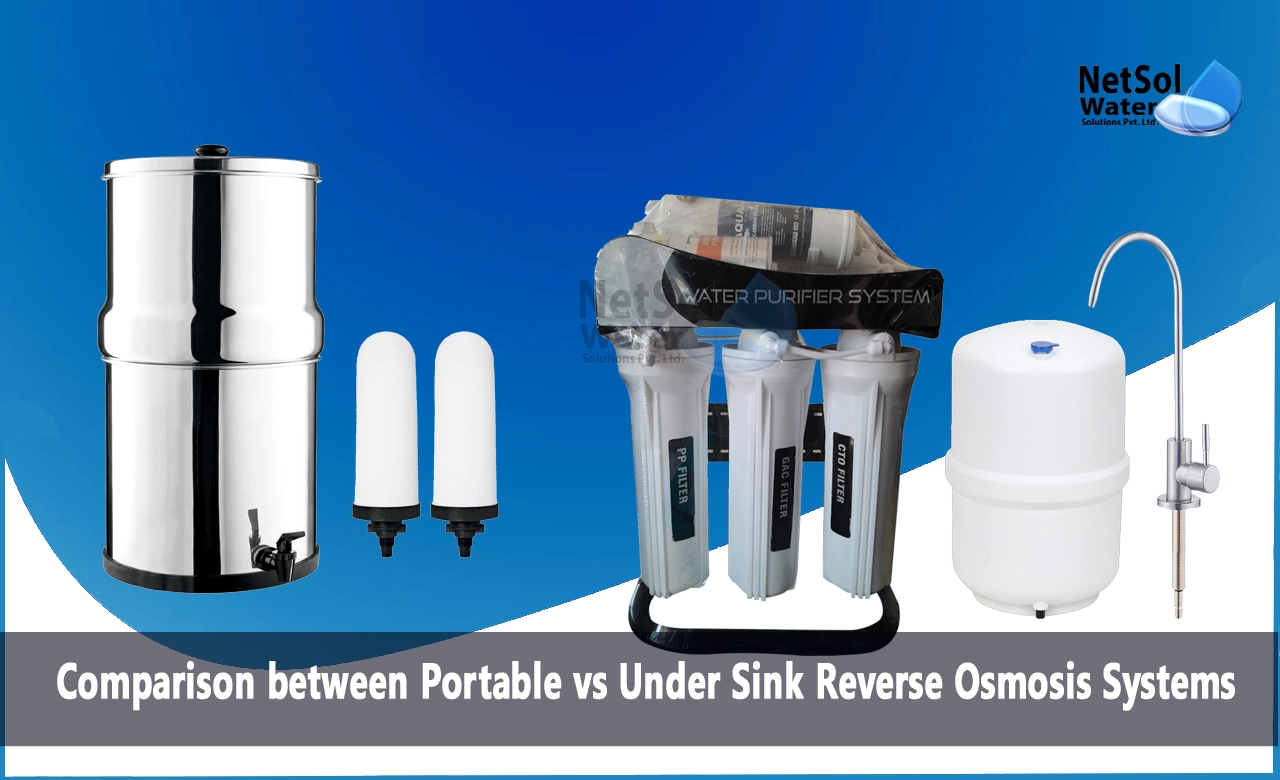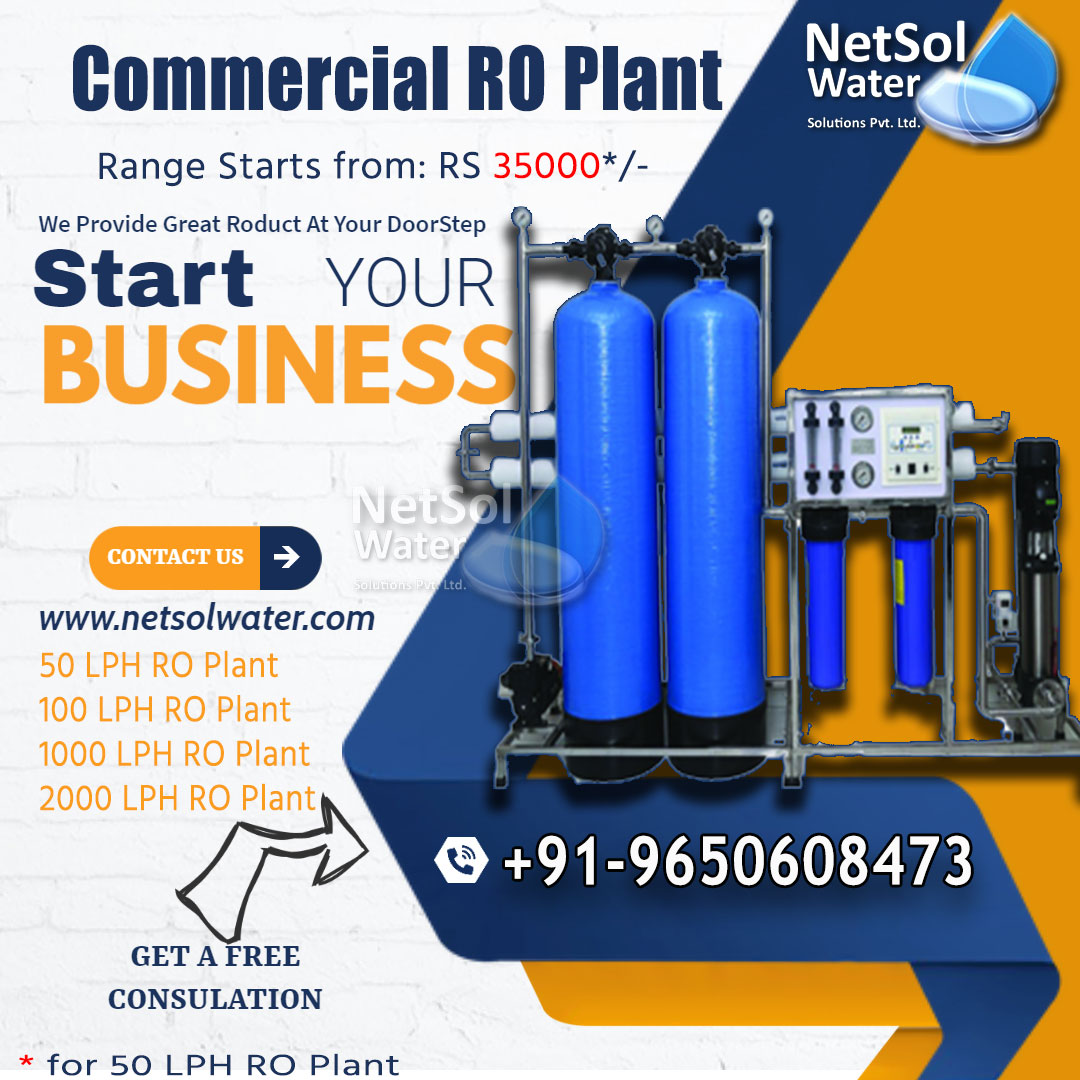What is the difference between Portable and Under Sink RO Systems?
Reverse osmosis (RO) is one of the most thorough methods of home water purification available today. RO systems come in two main configurations - portable units that sit on your counter and deliver water into an attached tank, and under sink systems which are permanently installed below the sink and deliver RO water through a separate faucet.
In this comprehensive article, we’ll analyze the pros, cons, costs, and use cases of portable and under sink RO systems. Key factors like purification performance, convenience, installation, and maintenance will be compared in detail. We'll also provide recommendations on selecting the best system based on household needs and water usage. Whether an apartment renter or homeowner, you’ll learn which RO system works best for your situation after reading this guide.
How Portable RO Systems Work
Portable RO units are self-contained water purification systems consisting of a low-pressure pump, RO membrane housing, water storage tank, and polishing filter cartridges. Here is how they work:
- Users fill the intake water chamber manually with tap water or connect it to the faucet with a diverter valve.
- Water is drawn through a prefilter by the electric pump into the RO membrane housing.
- Purified water passes through the membrane into the pressurized storage tank while concentrated brine water is sent to the drain.
- Treated water is dispensed from the tap on the tank, which holds up to 3 gallons.
- Additional activated carbon cartridges polish taste and remove residual contaminants.
Portable systems don’t require permanent installation and range from small countertop models to larger units. Tank capacities, membrane efficiency, and filter cartridge lifespans vary across models from different manufacturers.
Benefits include simplicity, mobility, and quick setup. But throughput is lower than under sink systems and the tank requires regular refilling. Next, we’ll examine under sink RO operation.
How Under Sink RO Systems Work
Under sink RO systems are designed for permanent installation out of sight below the sink. Components include:
- High pressure pump - Provides 60-100 psi pressure for efficient RO filtration.
- Prefilter cartridges - Stage 1 sediment and activated carbon cartridges remove particles and chlorine.
- RO membrane housing - Thin film composite (TFC) membranes remove dissolved salts and minerals.
- Storage tank - Pressurized 2-3 gallon tank smooths out delivery.
- Drain saddle - Fits on sink drain pipe to route wastewater brine away.
- Faucet - Typically an air-gap faucet installed on the counter to deliver RO water.
Cold water supply lines feed an automatic shutoff valve connected to the RO pump. Purified water from the membrane flows into the tank which maintains pressure. Output hoses route water to the RO faucet.
Benefits of under sink RO include higher output, near continuous supply, and point-of-use filtered water from the dedicated faucet. However, expert installation is required along with some permanent modification to sink plumbing.
Now that we’ve covered operation, we’ll do a side-by-side comparison of performance and cost factors.
Detailed Comparison of Features
Portable RO Systems:
- Convenience and portability. Can be set up anywhere or moved as needed. Easy to install.
- Lower output and capacity. Tank holds 1-3 gallons and refills slowly. Not suitable for high water demand households.
- Uses lower pressure pump. More efficient but slower filtration compared to under sink.
- Prone to storage tank fouling over time. Requires tank cleaning and replacement.
- Generally lower cost. Around $120-$400 depending on capacity, tank volume, and filter lifespan.
- Water not available on demand. Users must wait for the tank to fill.
Under Sink RO Systems:
- High capacity and quick flow rates. Can keep up with high household usage.
- Near continuous supply from the dedicated faucet. Water available whenever needed.
- Uses multi-stage booster pump for the best RO membrane performance.
- Installation can alter existing plumbing and requires professional help.
- More expensive. Cost for parts plus installation ranges from Rs. 25000-Rs.100000.
- Permanent installation limits flexibility. Difficult to move once plumbed in under sink.
With the basics covered, we’ll dive into the pros and cons of these two system types for different home situations.
Pros and Cons By Housing Situation
Portable RO units are an excellent choice for renters seeking purified water on a budget:
Pros:
- Easy setup without changing plumbing. Suitable for apartments and rentals.
- Low cost starts around Rs. 10000.
- Can be taken along when moving.
Cons:
- Daily refills required. Inadequate for high demand or larger households.
- Prone to fouling over 1-2 years. Requires cartridge and membrane changes.
For homeowners, under sink systems provide higher performance despite the higher cost:
Pros:
- Dispenses premium purified water on demand. Delivers 2-3X more than portable.
- Dedicated faucet is convenient for cooking and drinking.
- Long lifespan with routine filter changes every 2-5 years.
Cons:
- Permanent installation with sink modifications required.
- Upfront cost of Rs. 25000+, plus any needed plumbing work.
- Not easily removed if homeowners relocate.
Under sink RO maximizes benefits for larger households with the means for installation. Renters can reap advantages with portable systems on a limited budget.
Recommendations and Conclusion
For renters and small households - Portable RO units offer an affordable entry point for controlling water quality. Look for a unit with adequate daily output for your needs and plan to replace filters annually.
For homeowners and larger households - Invest in a permanently plumbed under sink RO system for the highest performance and convenience. Hire a plumber if uncomfortable doing kitchen alterations.
Ideally, complement your RO system with testing to identify the contaminants in your tap water. This allows selecting the proper cartridge filters to target any problematic compounds present.
While the upfront cost of under sink ROs is higher, the 5-year lifecycle cost can be lower due to slower fouling and filter replacement needs. Take advantage of Black Friday sales to get the best prices on RO systems and replacement filters.
Reverse osmosis excels at removing impurities and contaminants that make water taste and smell bad. RO systems put purified, refreshing water on tap for drinking, cooking, and food preparation. While portable units work for light use, under sink ROs maximize benefits for home installations. Size your system appropriately and take advantage of emerging innovations like ultra-high recovery ratios. With this guide’s insights, you can confidently choose the best reverse osmosis system to upgrade your household water quality.




